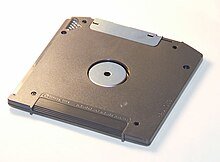The Zip Drive
A Zip drive is a removable disk storage system that was introduced by Iomega in the mid-1990s. It was designed as a higher-capacity, faster alternative to floppy disks, and was popular for backup and file transfer during that era.
Functions of a Zip Drive
- Data Storage: Store and retrieve large files (compared to floppy disks).
- Data Backup: Used for backing up important files.
- File Portability: Transfer files between computers, especially in offices and schools.
- Archiving: Keep long-term archives of documents, photos, and software.
Types of Zip Drives
- External Zip Drive (Parallel Port or USB)
- Connected to the computer via a parallel port (older PCs) or USB.
- Easy to plug in and use on multiple machines.
- Internal Zip Drive (IDE/ATAPI)
- Installed inside a desktop PC.
- Connected using IDE cables like internal hard drives.
- SCSI Zip Drive
- High-speed version for professional or Mac users.
- Used SCSI interface, mostly in creative industries.
Zip Disk Sizes (Capacities)
- 100 MB (original version, released in 1994)
- 250 MB (released in 1998)
- 750 MB (released in 2002)
Each disk was slightly larger and thicker than a floppy but much more durable and higher in capacity
How a Zip Drive Works
- Inserting the Disk: A Zip disk is inserted into the drive like a floppy.
- Reading Mechanism: The drive spins the disk and uses a magnetic read/write head to access data.
- Magneto-resistive Technology: It reads data from the disk magnetically, allowing for higher density than floppy disks.
- Motorized Eject: The drive often includes a motorized system to safely eject the disk.
Decline in Use
- Replaced by CD-RWs, USB flash drives, and external hard drives in the early 2000s.
- Limited by capacity and proprietary design.
Summary Table
|
Feature |
Details |
|
Function |
Storage, backup, transfer of data |
|
Types |
External (USB/parallel), Internal (IDE), SCSI |
|
Capacities |
100MB, 250MB, 750MB |
|
Media |
Removable Zip disks |
|
Interface |
USB, Parallel, IDE, SCSI |
|
Use Case |
Mid-90s to early 2000s computing |


